It was dawn, about 6 AM, when I awoke to the bellowing call of a loon. I am used to waking up at that time automatically with or without an alarm clock since it was the time I woke up for work throughout most of my adult life. But the loon served as an alarm clock for me this particular morning.
The temperature was brisk but comfortable for a start to the day – in the low 50s F. Unzipping the rainfly on my tent, I peeked out and found the air to be fresh with smells from dampness on the forest ground and downed timber.
Shades of green spanned the woodlands in front of me on this early June day, displaying the essence of spring. I woke up to a morning in the Sylvania Wilderness and Recreation Area in the Upper Peninsula of Michigan.
Some of the links in this article may contain affiliate links. When you make a purchase using these links, part of the proceeds go to Snowshoe Mag. Additionally, as an Amazon Associate, we earn from qualifying purchases. Please see our disclosure for more details.
About the Sylvania Wilderness
The Sylvania Wilderness and Recreation Area is an 18,327-acre paradise located in the Ottawa National Forest of Upper Michigan near the Wisconsin border. It is home to 34 scenic glacial lakes and has more than 26 miles (42 km) of hiking trails. What makes Sylvania unique is that it is an outdoor playground during all four seasons for canoeing, kayaking, backpacking, four-season camping, fishing, cross-country skiing, and snowshoeing.
The Forests
While the word “sylvan” pertains to woods or forest, Sylvania’s trails take you past multiple scenic lakes, through plush old-growth forests, up and down rolling terrain, and swampy bogs. Stately hemlocks are a dominant evergreen in the area, with many trees over 200 years old.
Sugar maple (great for maple syrup) and yellow birch are also prominent there, along with a mix of other varieties of deciduous and coniferous trees. And red and white pine trees dominate the islands that dot the lakes.
Read More: Evergreen Tree Identification: Pines Aren’t the Only Evergreens
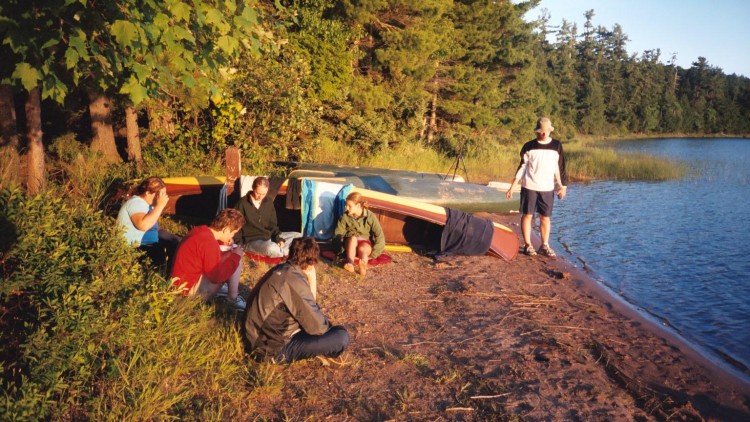
With so many lakes, the Sylvania Wilderness is great for canoeing and a beautiful area to relax in during breaks. Photo: Jim Joque
The Wildlife
Sylvania is also home to an array of wildlife. Many species of birds live in Sylvania year-round while migrating birds reside in the summer. The most popular Northwoods visitor is the loon with its echoing call that carries boldly across a lake…. a memorable sound for campers.
Bald eagles and osprey can be spotted in trees and soaring high above the pristine waters. White-tailed deer are plentiful and will periodically visit campsites. Squirrels and chipmunks are frequent camp visitors as well. Also found in the area are raccoons, porcupines, bobcats, foxes, and black bears. You may hear an occasional wolf pack in the vicinity of Sylvania as well.
Read More: A Newfound Passion: Wildlife Tracking and Identification
The Geography
The geography of Sylvania is exceptional in that the wilderness area has many glacier remnant landlocked lakes. Some of the lakes are so pristine and clear that you can see down 20 to 30 feet (6 to 9 m).
Being glacial lakes, no rivers are feeding them. The lakes get their water from springs and precipitation. High Lake is my favorite of all the lakes, being about 100 feet (30.5 m) deep with clear aqua-blue water and visibility for many feet below the surface. All lakes in Sylvania are open to only canoe and kayak traffic.
The History
Historically, Sylvania was purchased by the U.S. Forest Service in 1967. Before that time, the property has a story that if trees could talk, they would tell a most intriguing tale.
In referencing a 1986 edition of Sylvania by Bonnie Peacock, she pointed out how in 1895, 80 acres between Clark and Loon lakes was purchased by Albert Johnson. He had intended on logging the area. Upon his arrival to Sylvania, Johnson was astonished at the beauty of the area and decided not to log, but rather he built a cabin on his woodland property and used the land for fishing and hunting.
Later, seven businessmen purchased a good amount of land in the area and formed the Sylvania Club, using the land for sports. A lodge was built on the south end of Clark Lake. And in 1923, William Thompson bought a majority of the Sylvania shares. He built a huge lodge there but died shortly after the project began.
Thompson’s daughter and her husband completed building the lodge, having 16 bedrooms, 13 fireplaces, and an indoor gymnasium. But they moved away and left the resort to caretakers who watched after the vacant space for years until its purchase by the federal government. The lodge and cabins were destroyed or removed, leaving Sylvania a wilderness area.
Spring
Spring is a wonderful time to visit the Sylvania Wilderness. In addition to being woken by loons (as on my trip several years ago), there are excellent canoeing opportunities.
Several years ago, a friend and I scouted out an area of this magnificent backcountry and explored new water trails in planning a wilderness trip for college students that attended the University of Wisconsin Stevens Point (UWSP). We discovered two separate chain-of-lake loops involving several lakes and portages that would be excellent for a canoe trip. But, 34 lakes in total are available for canoeing, including these recommendations.
However, keep in mind that a high insect population invades the area in late spring. Mosquitoes, black flies, and horse flies are plentiful. At the end of the day in my story above, I crawled into my tent that evening around 6 PM to avoid the buzzing and biting.
To beat the insect invasion, visit in early spring, say early to mid-May. One year in May, two friends and I spent a couple of days canoeing and fishing on Whitefish Lake. There were practically no insects. It was a perfect spring trip. The portage from the parking area to that lake is the longest in Sylvania at 242 rods or 0.76 of a mile (1.2 km). We hiked in with our loaded packs and fishing gear, hiked back out, and then back in with our canoes overhead. I carried my 42 pound Kevlar Wenonah Spirit II and my paddle. We made the same portage out, culminating in four-and-a-half miles of portaging in two days. But it was well worth it.
Read More: Cold Weather Canoeing in Michigan’s Upper Peninsula
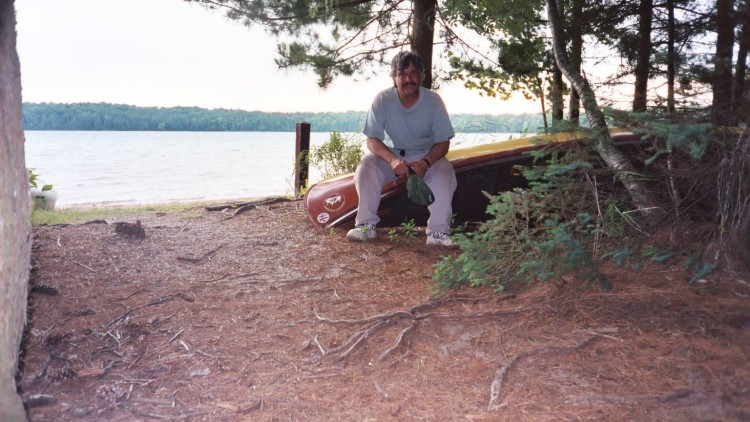
Springtime in the wilderness can’t get any better than this….with the exception of black flies. Photo: Jim Joque
Summer
Summer is filled with a whole new excitement and offers a different experience than spring. This time of year has many more visitors in that reservation for water access campsites fill quickly. You need to make reservations well in advance to get a chosen site.
Sylvania is quite a popular recreation area…not crowded, just popular. But once out paddling on the lakes and tucked away in a remote campsite, it is quiet and peaceful.
Canoeing & Kayaking
For many years, I led a group of 10 college students on a six-day canoe adventure each summer. Our goal for every trip was to paddle 13 lakes and make 18 portages. One of my most memorable stops was the only island on High Lake. We would spend two or more hours enjoying the serenity of the small and secluded island filled with mammoth white pines surrounded by pristine waters. We ate lunch there, basked in the sun, and had fun swimming.
You can swim in all of the 34 lakes in the Sylvania Wilderness. Clark Lake even has a developed beach you can use on the north end of the lake.
By accident one year, we discovered pitcher plants in the remote Fisher Lake on the south loop chain of lakes. With a deep red color to the water from the tannic acid of tamaracks, this lake was home to a plethora of fly-catching pitcher plants that captivated my student’s interest for hours. The plant is most unique and beautiful. With a pipe-like and red-tinted leafy trap, this carnivorous plant became a portrait for many student cameras.
Read More: Wildlife Encounters on the Water
Fishing
In addition to paddling and plant finding, summer is also an ideal time for fishing in the Sylvania Wilderness Area. You can find bass, walleye, trout, northern pike, and panfish in most lakes in the wilderness area. Canoeing and bank fishing are both allowed in Sylvania, and a permit is required.
Read More: Fishing Guide for Beginners: Catching Your First Fish
Fall
Fall offers yet another exceptional dimension to experiencing Sylvania.
Hiking and Backpacking
Fall is an ideal time for hiking the areas 26 miles (42 km) of trails. Please note that all trails are unmarked, so be prepared with your day accessories and navigation skills.
I led a backpacking trip with college students during a time when trees were in full color. In areas where ash, aspen, and birch flourished, the forest floor gleamed yellow as we pushed our way through leaf-covered trails. Red, orange, and yellow reflected off still water, and splashes of fall color against a brilliant blue sky appeared as if an artist dabbed paint on a canvas. This was truly the epitome of nature’s beauty.
I was teaching a Leave-No-Trace trainer course that fall as we hiked around the 9-mile Clark Lake Trail. We had a cleansing fall rain during our hike. But once the clouds broke and the sky cleared, Sylvania was on its best behavior for camping. We set up camp about halfway. The following day, we were surrounded by color as we hike back to the trailhead.
Camping
Please note that camping is allowed only at designated wilderness sites reachable by water or trails, and a permit is required. Reservations must be made at least 3 days in advance and up to 6 months in advance through Reserve America or by calling 1-877-444-6777. There is also a small number of campsites are reserved for walk-ins on a first-come, first-served basis. Six persons per campsite is the maximum number allowed.
For the less adventurous, there is also camping near Clark Lake at the Sylvania Campground. Whether campground or wilderness camping, you will first watch a short video at the Entrance Station about Leave No Trace, essential in Sylvania. The Entrance Station to Sylvania is about 6.5 miles (10.5 km) west of Watersmeet, Michigan.
Winter
Backpacking, snowshoeing, and winter camping in the Sylvania Wilderness Area are exceptional. Solitude and tranquility are words that best describe Sylvania this time of year.
I led students on weekend winter camping trips to Sylvania annually for a few years. On some trips, we had little snow, and on other trips, we had ample snow for snowshoeing.
One year we arrived during a snowstorm and experienced the challenge of setting up camp, dining and crawling into our tents in heavy snow. On another trip, students put on snowshoes and hiked three miles to the south end of Clark Lake to set up camp.
A most memorable moment in the evening after sitting around the glowing golden embers from our campfire was holding my hands over its rising warmth one last time before crawling into my chilly tent for the night. Then, sliding down into my sleeping bag and allowing only my mouth and nose exposed to the air, I fell fast asleep.
Read More: Snowshoeing, Snow Camping, and Snowstorms
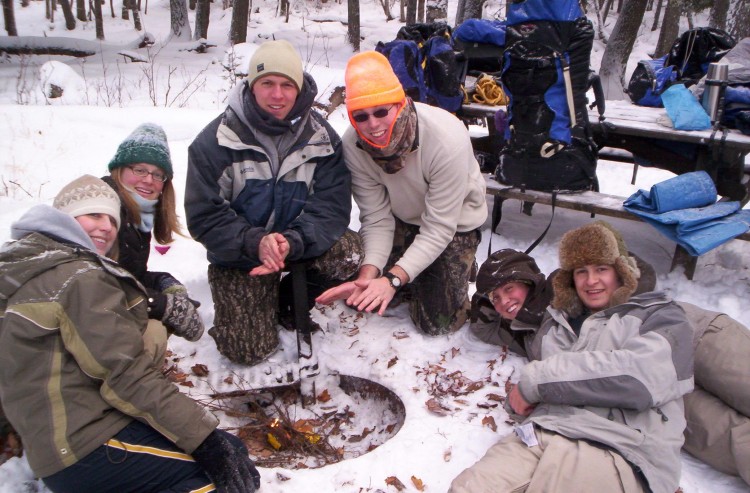
Warming up before setting up camp on a winter trip in the Sylvania Wilderness. A great trip to journal! Photo: Jim Joque
Explore the Sylvania Wilderness
That night during my most recent spring trip to Sylvania, the three of us finished a walleye supper and enjoyed an evening campfire as night fell upon us. After cleaning up camp, I got into my tent and sleeping bag and reflected on how much I cherish my visits to this home away from home.
I always enjoy camping in Sylvania during any season. And I look forward to my next visit. Carole King’s words are quite pertinent when she sang, “winter, spring, summer or fall, all you got to do is call, and I’ll be there.” Yes, I’ll be there, in the Sylvania Wilderness.
Have you visited the Sylvania Wilderness Area? What is your favorite activity? Please share with us in the comments below.
This article was originally published on August 20, 2012, and was most recently updated on May 3, 2021.
Read Next:
Canoeing Guide for First-Timers
Top 10 Snowshoe Tips for First-Timers
The Pack and Snowshoe Experience
Old Guys Surprise: Shoein’ in the Porkies

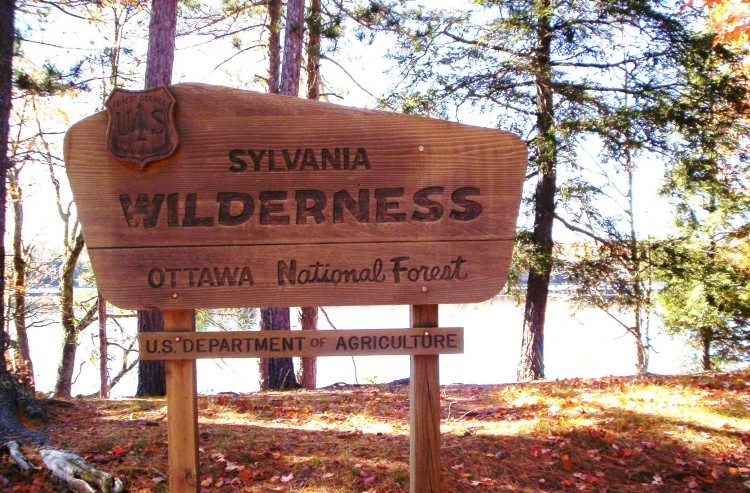
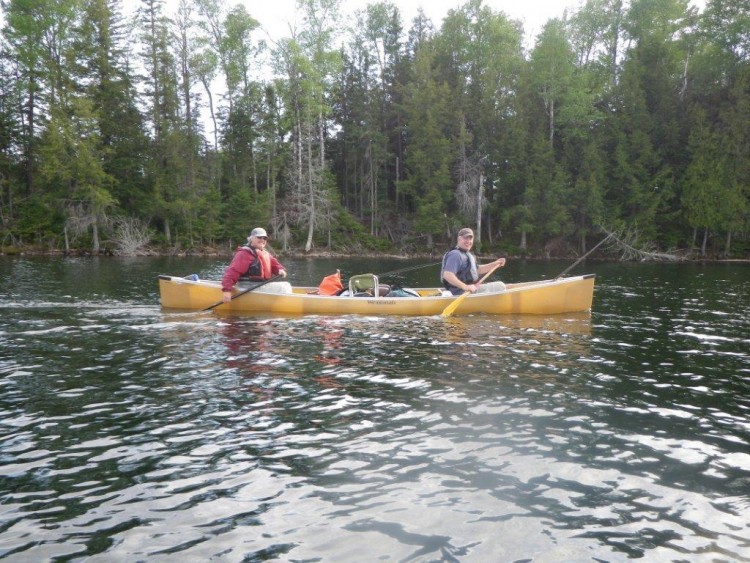
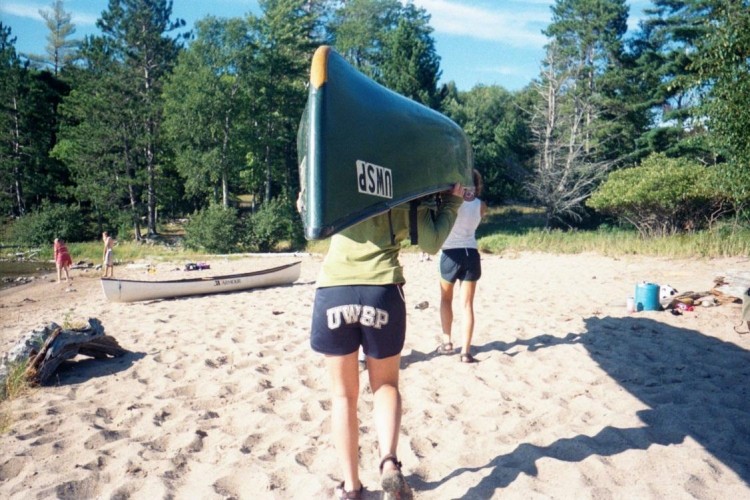
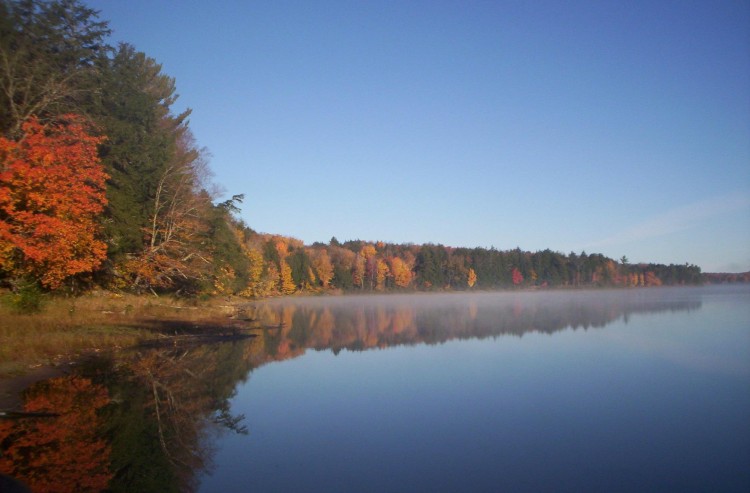
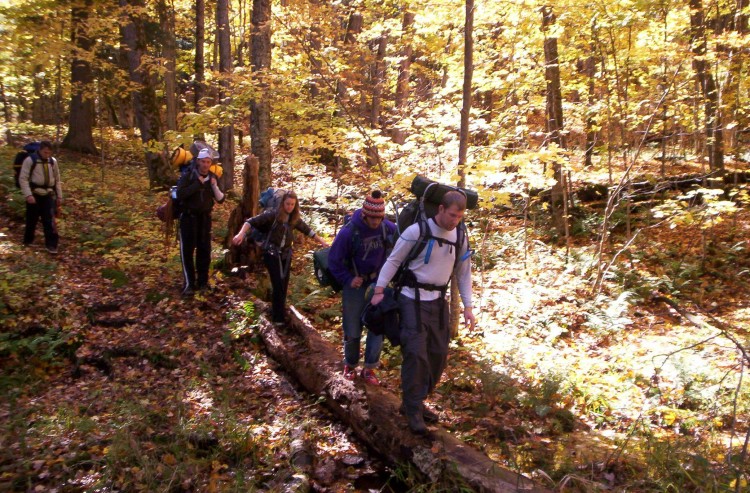
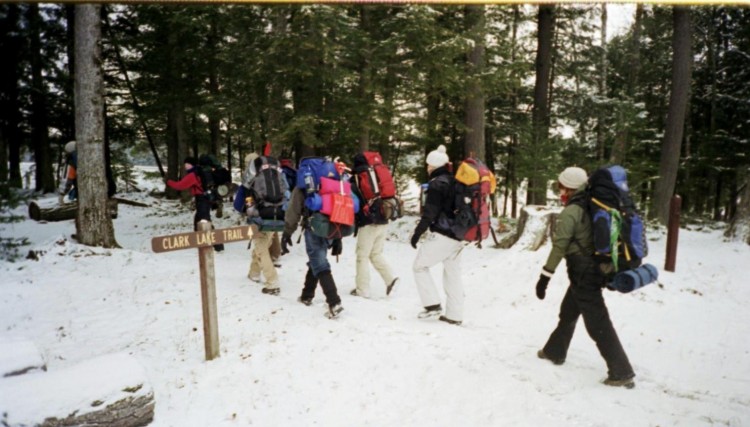
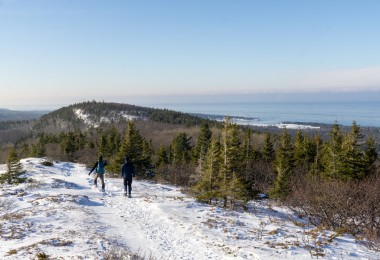
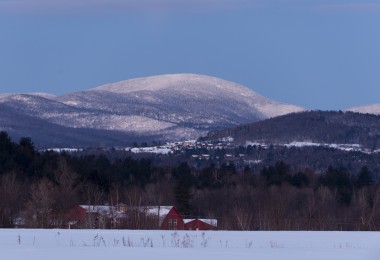
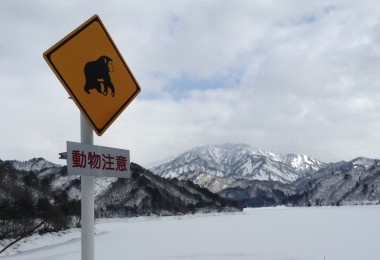
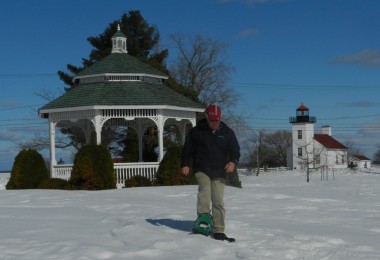

Leave a Comment